The 50 States Project is a series of candid conversations with interior designers across the country about how they’ve built their businesses. This week, Brooklyn-based designer Susana Simonpietri of Chango tells us how staying small at the start set her up for successful growth, why she never stops asking her team for feedback, and how mentorship has replaced creative control as her top priority.
What pushed you to launch your own firm?
I always knew that I wanted to work on my own. All the years that I spent working at design firms, I was trying to take on as many challenges as I possibly could so that I would grow as fast as possible. I paid a lot of attention to the heads of the companies I was with to see what worked and what didn’t, or what I would want to repeat and what I wouldn’t.
Were you actively looking for jobs that could teach you something new?
When you come out of school, you’re like, “Let’s see who will hire me,” right? I’m from Puerto Rico, and a friend of my parents who’s an architect had been a professor of the designer Benjamin Noriega-Ortiz. I was lucky, because [that architect] wrote to Benjamin and said, “Hey, I have this friend who has this daughter. Would you consider giving her an internship if you interview her and she seems good?” In 2003, I started interning there, which turned into a job—I was doing that full-time while finishing graduate school at Pratt.
He had a very small shop, maybe five people. He had been doing a lot of residential work for kind of eccentric famous people—Lenny Kravitz’s house, Damon Dash and Sean Combs—but he had just started trying to tap into the hospitality world. While I was there, I realized that I wanted to understand what it was like to work for a firm that does mostly commercial work, so I moved to Studio Gaia, which did a lot of W Hotels, Thompson Hotels, and that kind of thing. They did [the innovative fast-casual restaurant] Republic, which I don’t think exists anymore, and restaurants like Cafeteria, which became a Sex and the City staple. Studio Gaia was really hot back then, and they were larger—around 10 or 12 people. I spent my time there doing mostly hospitality, and while I learned a lot about management when I was there, I also realized that I didn’t necessarily want to do only hospitality.
Why not?
In part because of the amount of value engineering that goes into it. But also, it was the lack of closeness that forms in residential work—it’s a different level of service. In 2007, I moved to Zeff Design [now Mark Zeff Design], where I did hospitality and residential in equal parts. It was the first time I had ever worked at a firm that had separate architecture and interiors studios, which was very interesting for me. It was also already larger than the previous firms I had been in—when I got hired, we were about 15 people—and by the time they started doing layoffs, they had grown tremendously, to about 75 employees.
When the economy collapsed, I had an opportunity to start my own thing. It’s a funny time to start a business, but I had been in touch with several people who still wanted to have some design work done but couldn’t afford to work with the larger firms anymore. There had been many rounds of layoffs [at Mark Zeff Design], and by 2009 I was one of the last people there. I was friends with one of the main managers of the company, and I went to him and asked to be in the next round of layoffs. I could see all my friends getting laid off and some of them really needed the job, so I was like, “Just do me next, because I actually have something else that I can do.”
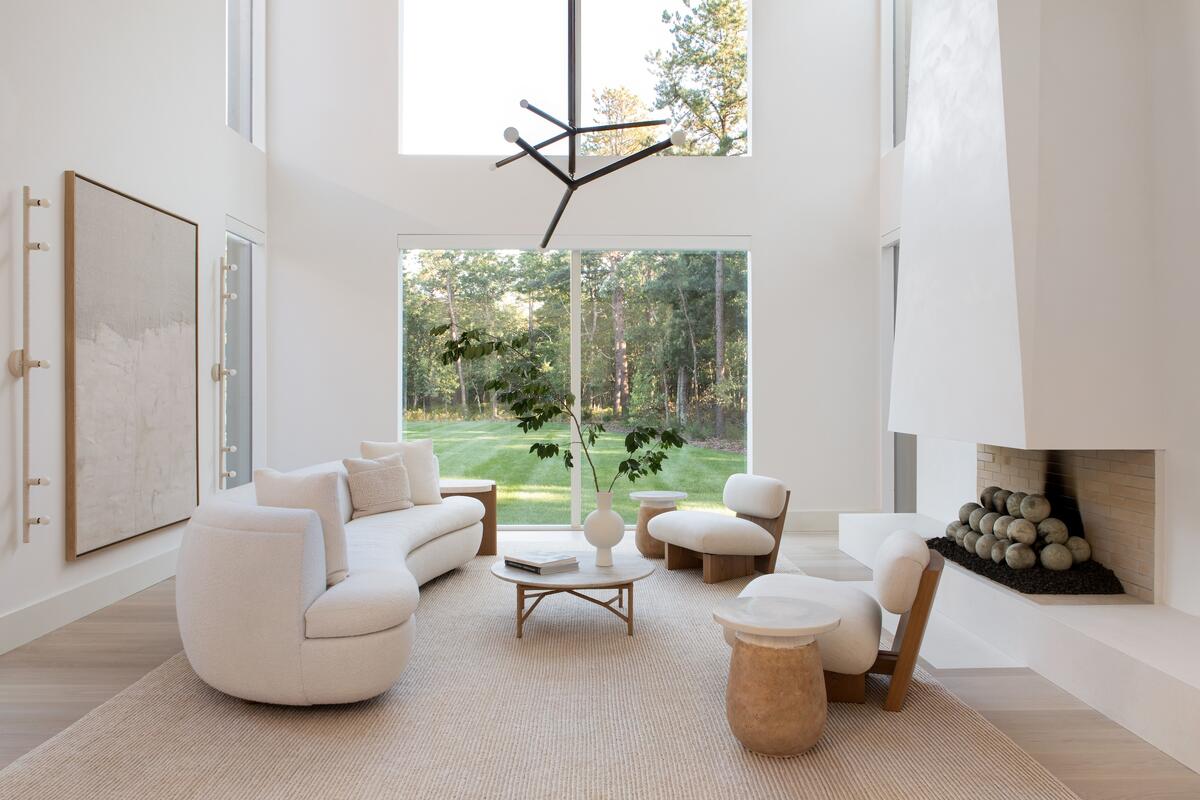
Did you launch your firm immediately?
I did. I named the firm after the chango, which is a gregarious black bird in Puerto Rico. I knew what I wanted, and I dream big, but I very much take it one day at a time. I definitely knew what I wasn’t going to do, which was go out and start hiring people. I wanted to stay as small as possible for as long as possible, because that would allow me to stay creative.
While I was working for other people, I didn’t have a chance to really develop my voice. It’s as if you were working in a painter’s studio and you paint their paintings for years—when you’re finally like, “I’m going to be my own painter,” you’re going to be painting like them for a while because you haven’t honed your voice. It takes a couple of years to find yourself, and I knew that I needed to get through that first. Little by little, my own style uncovered itself.
What does that feel like?
At first, you go through a lot of moments of, like, “Oh, my God, I think I suck”—the sense that you might be a terrible designer. Then you start becoming more confident in what you’re doing. Eventually you realize, “Wait, there’s something here.” It just starts forming, and it’s a very good feeling. I was having a conversation with someone the other day about how having kids is like a rebirth of yourself. I think when you start working as a designer on your own, it’s the same thing: You’re going to be born in a new way. That process is quite beautiful, but it’s also extremely scary.
How did the clientele start to evolve in those early years?
A lot of the projects were very small, and I had to chase things like crazy. Back then, there was no Instagram—it was hard to get your work out there. But one client who came to me had parted ways with one of the previous firms I was with, and he was like, “I just bought this house in the Hamptons next to the water, and it needs a ton of architectural work and decorating. Would you take it on?” That was a big project for me to start with, and the photos came out beautiful. I was like, “If this is how my life is going to be, this is amazing.” But of course, that didn’t continue—it took years for me to start doing that kind of project again. I took a major step back and had to take a ton of little projects until I figured out what I was doing and how to get my work out there.
It wasn’t always uphill, and I always knew it was going to be fine because I hadn’t taken on the risk of hiring people. I worked out of my townhouse in Bed–Stuy, so I didn’t have high overhead, and I was making enough to maintain myself, essentially. I’ve seen a lot of younger designers start hiring immediately, and then they need to take an office space that costs a ton of money in New York, and it puts a lot of pressure on you—the moment you have to start feeding someone else, that’s a whole other game. But I deliberately didn’t put any of that pressure on myself for a long time.
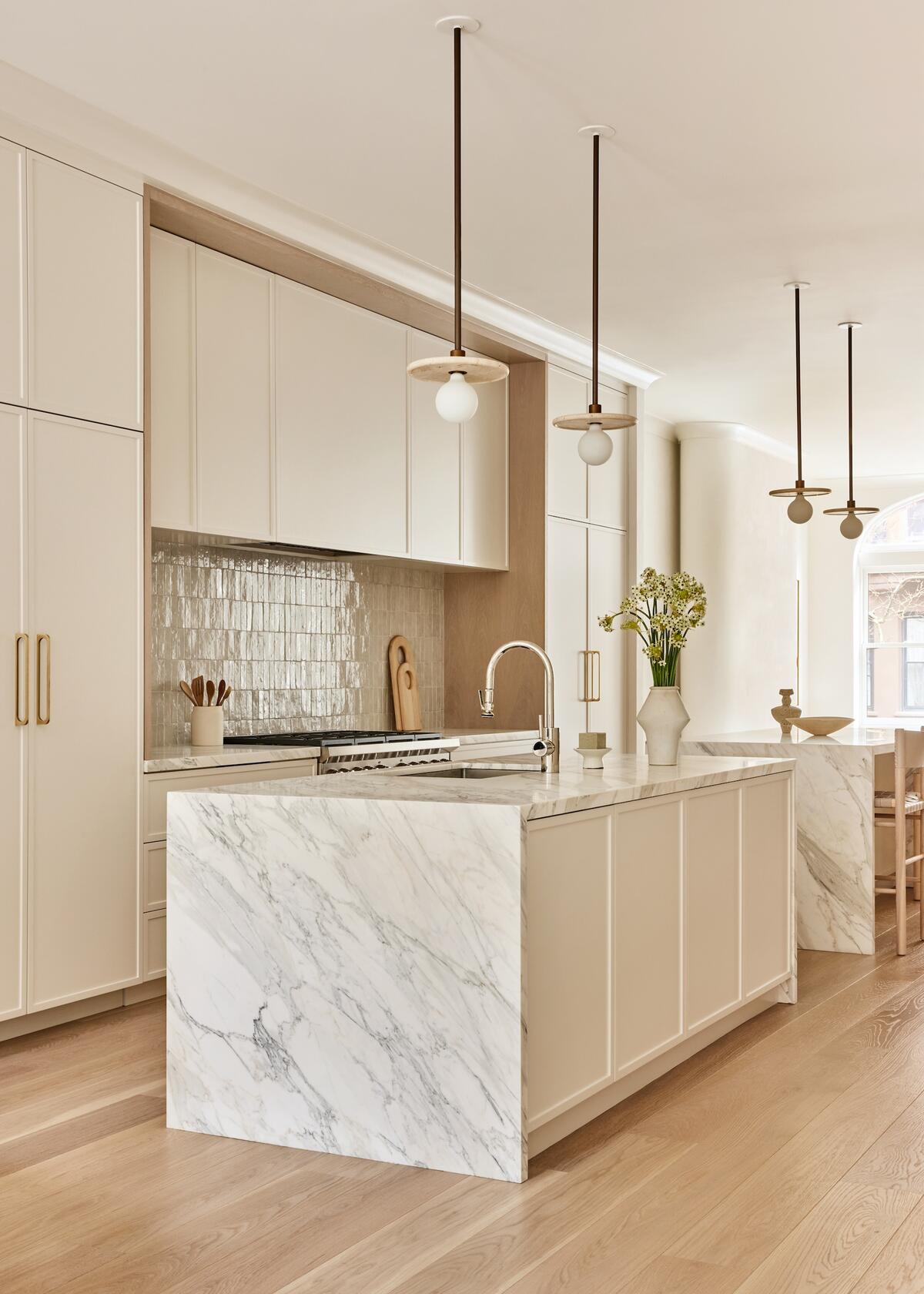
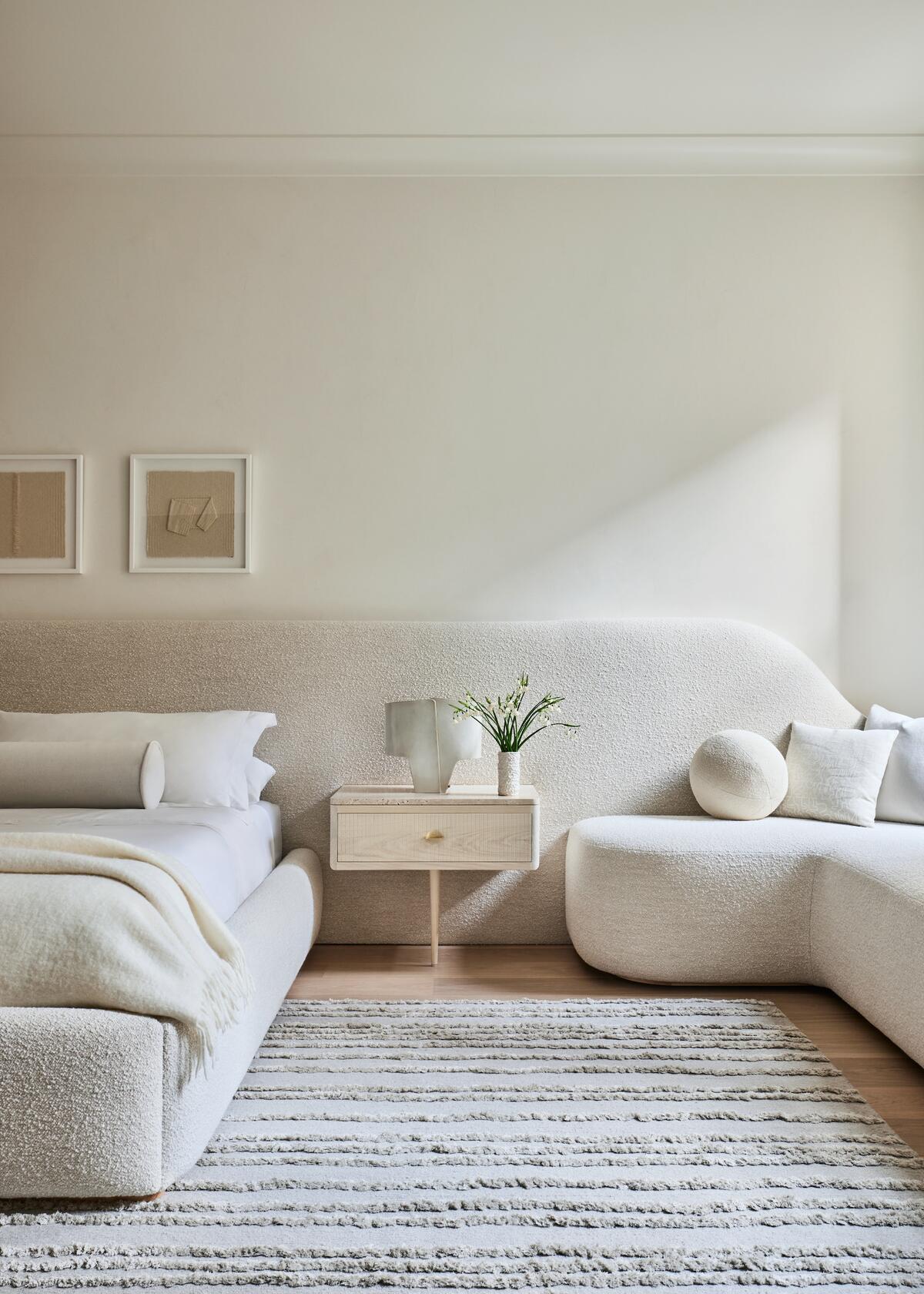
What eventually pushed you to start hiring?
When I almost broke myself. I must have been at least three years in, and I was working until 10 or 11 p.m. at night doing paperwork and purchase orders. The first person I hired was someone to assist with a lot of that paperwork. And then once you hire one person, you start mapping out, “What is the best use of my time? What is the best use of their time?” That’s when you can start hiring strategically.
The next person who joined Chango was my husband—he saw that I was becoming incredibly busy, and that we had a good number of inquiries and contracts going out, and that it made sense for him to deal with that side of the business so I could focus on the projects. From there, we’ve continued growing only as needed—we stayed around five to seven employees for at least six years, then made a little leap from there because there was a need. When you jump to 15 or so people, all of a sudden you’re at a number where you need to start making teams. We kept growing, and right now we’re hovering around 30 people.
I think when you’re very young, you see other leaders lead—I remember thinking that the work ethic of some of my bosses was astronomical, and I admired them tremendously in certain ways. But when you’re on the employee side, it’s also very easy to criticize and think, “Oh, I would definitely do better,” or “I would do this differently.” Then you become a boss yourself and you realize how hard it is.
What is the structure of your team today?
The first person who was the head of a department was a studio director who originally did architecture and interiors. Then we realized that, no, we needed to separate them—we needed an architecture director and an interiors director. We also have a sourcing director, who [oversees a team] that helps with the sourcing for all projects. So right now, we have those three directors and then we have pods of people within each department—a couple product managers on the architecture side and a couple on the interior design side, and each of them works in a pod of three along with an intermediate and a junior. The sourcing team also has a pod of three that jumps into every project, and then we have a purchasing team, an HR person, an office manager, an accountant, and my husband has a team that works with him on business development.
What is the dividing line between the roles for the interiors team and the sourcing team?
They work hand in hand. One of the pivotal moments of my career was when I realized that I had a lot of project managers who were doing well handling products—but when you hire someone, it takes a long time for them to get up to speed with what kind of work they’re doing and the firm’s style. Now when we start developing a new design presentation, I usually meet with the team many times before we meet with the clients. But early on, we didn’t have it as honed as we do now, and I remember being freaked out and feeling like the design presentation wasn’t ready to show to the client. By that time, we didn’t have that many days to finish it, so then I would work really late to clean it up and get it to the point that it felt ready. It was an incredibly stressful thing to have to do, and I didn’t think it was a good use of my time. I realized that if I could have someone with great style and experience that I really trusted, they could help direct how the projects were going to look, which would take some stress away from the project managers and their teams.
The project managers are trying to develop a new project while handling a ton of other projects that are [already underway], and it doesn’t always leave them that much time to be creative with the amount of work that we need to be producing. So it made sense to bring on a team to do that. We sit down to develop the voice of the project, and then they work together as a team to present to me. Once the project is presented to the client, we move into the phase of ordering—that’s when the sourcing team pulls away from the project and the interior design team keeps going and carries it to the finish line. The sourcing team only comes back in at points like when we’re pulling for accessories, dealing with art and photo shoots—they’re sort of like hummingbirds in the design studio, coming in and out as needed.
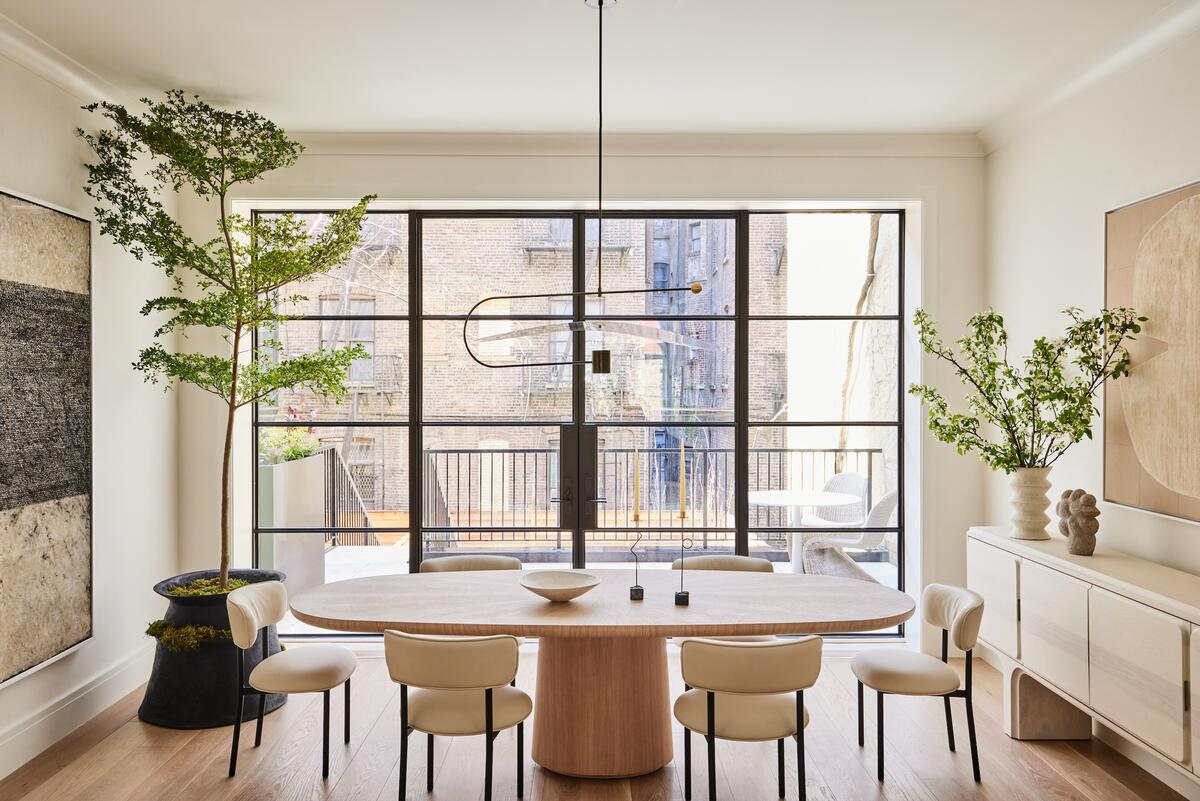
Who on the team tends to interact with the clients?
That’s the project managers of each department, and then the mid-level person is usually in meetings to take notes and assist with presentations and site visits. There’s really no need for the sourcing team to do any kind of emailing or anything like that with the client, but they’re there for the design presentation. Typically a project manager will drive the presentation—we usually generate these lengthy and complicated design presentations that could be 115 or 120 pages long—and then the sourcing team will bring in the materials.
Can you tell me more about that presentation?
In the beginning, we try to gather as much visual information from our clients as possible. I find that clients often say, “I want it to feel this way,” and they’re using words that convey an image in their head, but I want to make sure that I’m seeing the same image. So when we sign on with the client, they’ll give us a brief on what they’re thinking, and we go through a process of gathering imagery on Pinterest, and then we’ll turn that into a far more complicated and intricate board divided by room. At that point, we have a long call to go over ideas with the client. We usually present plans at the same time, which is generally in a Zoom or Google meeting. And then after that, we generally don’t see the client again until the design presentation.
The design presentation is a whole day, unless it’s an exceptionally large house—anything above 20,000 square feet is a two-day presentation, but for the most part, they’re one day. We’ll ask them to come to our office early in the morning and we book them for at least five hours to sit down and go through it.
Are they seeing the design for the first time in this meeting?
We usually send our design documents prior to the presentation, and they get a couple of days to go through that. Sometimes clients will spend a lot of time making notes [beforehand]—they get to the meeting knowing what they want to do, which makes it go really fast. And some clients just show up and they haven’t even opened the documents, so we’re walking them through it for the first time. That can also be really beautiful. The team presents, and I’m there to be the referee. My goal is to make clients happy, and I take that very seriously, so I make sure we navigate any tension—maybe somebody’s getting a little bit too much and the other one is not—with ease and grace to make both [of the clients] happy.
The team does a live edit in Google Sheets so by the time the clients are done saying, “I like this, I like that,” we can see it all in one page, which is very helpful. Some clients can’t make decisions in the meeting, but the great majority of them walk away from those meetings having made at least 90 percent of the decisions for their whole home.
So often, I talk to designers who are traveling to their clients for presentations. What is the thinking around the expectation that they come to you?
It’s just too complicated—it would require packing bags and bags of stuff to bring to them. You’re going to be sitting for five hours for a meeting—if we try to do that at their house, they’re going to have too many distractions and they’re not going to be able to make as many decisions. We also have a humongous material library full of things, so if there’s something that’s not working, we can very quickly come up with a new scheme. We’ve worked with very busy, very successful people, and we’ve never had a client say they didn’t want to come to a design presentation. They know the dates months in advance. If they’re not local, they just fly in, stay for a night or two in New York, and turn it into a trip.
After the presentation, we may see clients at certain site visits—but I’m telling you, some clients don’t want to have anything to do with any of it. They don’t want to deal with the contractors, so the next time you see them is after you install the product, which we do all at once. When it’s a beach home, we usually leave everything outfitted so they can just come in with a suitcase, hang their clothes in the closet and start using the house. Sometimes if clients are moving from one house to the other, we’ll handle the movers and the organizers—they come in and their closets are perfect, everything is done, and they don’t even have to think about any of it. That’s not a bad way to live.
That’s the dream! How many projects are you typically working on at a given time?
Probably at least 20.
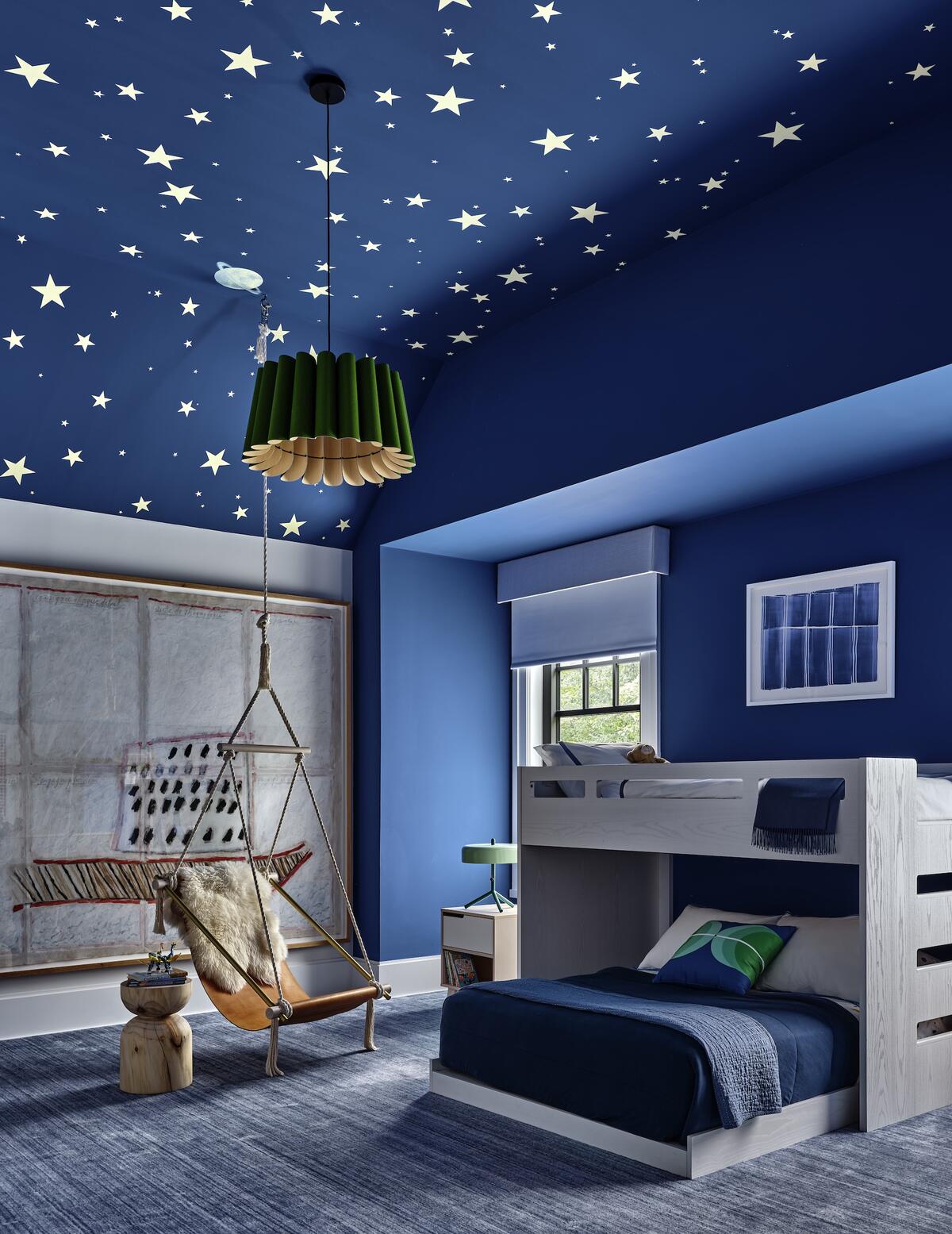

What, in that workflow, is the role that you’ve carved out for yourself? What is the thing that you don’t ever want to delegate away?
That’s a very interesting question, and I think it changes, honestly. I hear a lot of designers who get frustrated as their firms get bigger because they feel removed from the creative part, and they end up resenting that. But I realized early on that I don’t like to micromanage people—I did that when I was younger, and then I realized that it drove me and everybody around me insane. I had to let the people around me be creative and do their thing, even if that takes away from my ability to do a lot of the creative work, so I had to replace that with [something else that] brings me joy.
What was the replacement for you?
I get joy from managing the team and mentoring people. I spend most of my time talking to my team about where they are in their projects. They come in and sit, almost like I’m a therapist, and they say, “This is happening right now, and I’m wondering, what would you do?” And then we map it out together.
I think that our projects are getting better and better because I don’t have to worry about the basic smaller things. I come in when they have just about everything sorted out, and I’m able to say, “This is great. But you know, what would be incredible is if we did X.” I’m able to grab something and pull it one more step up, which I would have never been able to do if I didn’t have a lot of people doing a lot of the harder parts of the work. It releases something—it’s already so good, and then you can make it even better. That’s what I basically spend my days doing now, and it’s great. I get a lot of love from my team, and I feel very inspired by them and their growth. It keeps me happy, and it keeps them happy.
Was that a difficult mindset to cultivate?
It was incredibly difficult—especially because I’m from a generation where I had extremely difficult bosses. I [never experienced] the vibe that employees expect now. I didn’t have any mentorship whatsoever in that sense. I felt like there was an immense gap between my generation and the generation that came after in the way that we work, and I was hitting a wall, hard. I was not enjoying the dynamic of working with this next generation. But I realized that they’re not going to change—this is the way they are, and if I want something to work for my firm, and to continue working, it’s me who’s going to have to change. That’s when I reassessed the way I was managing, and the way I was interacting with my team in general, and it was very, very hard. I’ve arrived where I am and I’m very comfortable now, but I’m constantly fine-tuning. Even in my yearly reviews with my team members, one of my questions to them is, “Am I doing a good job? Do you feel you’re getting what you need from me as a boss?”
What does your team tell you they’re looking for from you?
More time. That’s what I always get: that they want more time with me. The other thing they’ve asked me to do for the past couple of years is get an assistant, because the schedule is so full all the time and it can be difficult to book meetings with me. I haven’t done it yet—I know I need to, but I feel like it’s a little bit too indulgent.
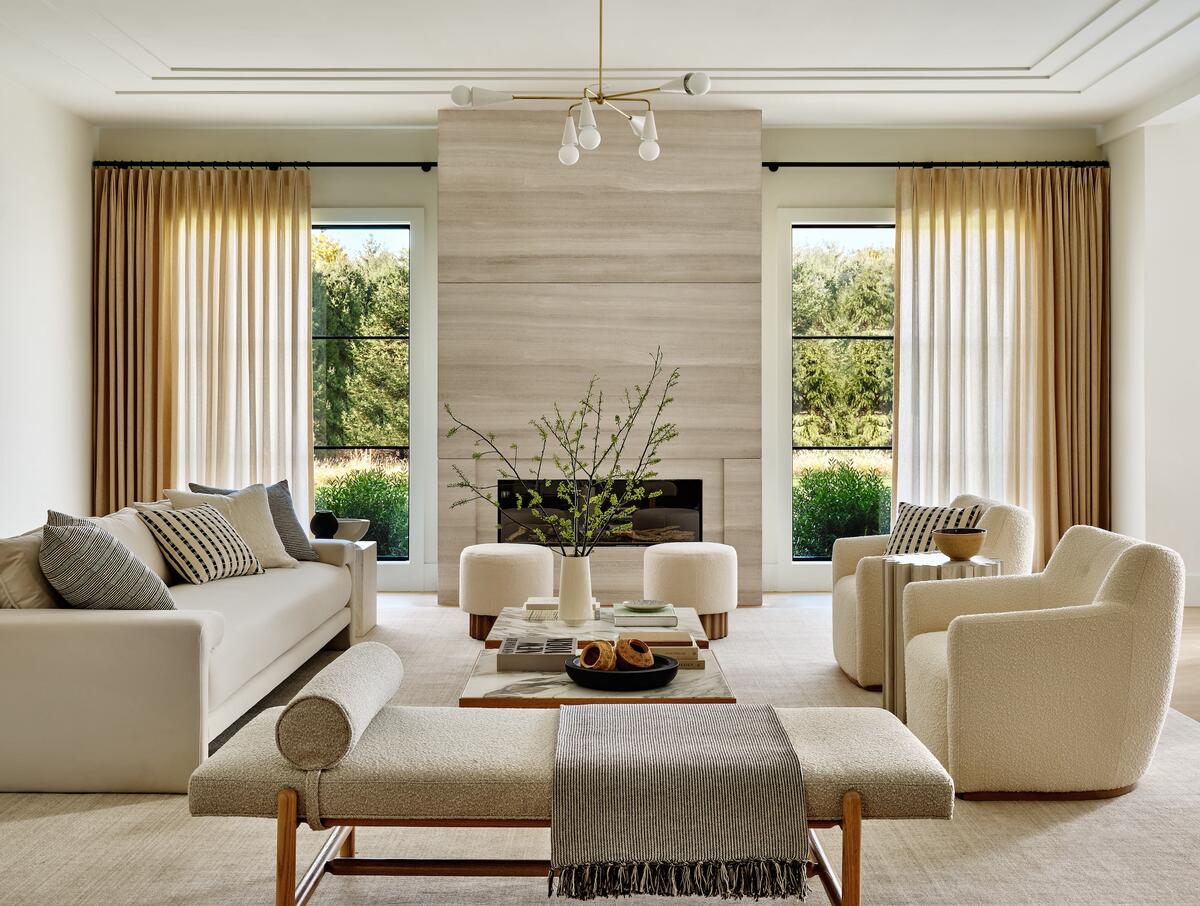
You said that your clients are able to plan for their presentation months in advance. Is your schedule similarly regimented?
When we sign a project, we’ll sit down and map it out: We know that we have to do the design presentation by X date for it to get delivered by X date; in order to do that, we need to meet on this week, this week, this week and this week so that we can fine-tune what we’re presenting. Then the project manager will go in and populate my schedule with meetings for that project for the next couple of months. And then if I have time in between meetings, I’m usually in the office and my door is always open—I mean, I have a glass office, so they can all see me—so they come in as they need to.
Let’s talk about your office for a moment. You put down your firm's roots in Williamsburg. How does that impact the opportunities that come your way, or the way you do business?
We’re very spoiled with our office. We’re on half of the 14th floor in the One South First building, right by Domino Park [on the Brooklyn waterfront], so we have these panoramic floor-to-ceiling views of Manhattan, from the Statue of Liberty all the way up. That is an incredibly inspiring way to work. I remember looking for office space in the city for a long time—I would see these buildings where a lot of the design studios are and I was like, “I don’t think I want to work in here.” There was barely any light, or no windows, or it was a hallway of a space, or you’re in midtown in places where you’re like, “Where are we going to go out to eat?” It just didn’t feel right for me. So we took a gamble and established ourselves in Brooklyn. At first, when our work was not out there as much, the hardest part was gathering a team of talented people. But once your name is out there more, it becomes easier to get people who want to come and work with you.
Can you tell me about your approach to billing and the charging strategy for your business?
There’s a percentage over the total of the project, and then there’s an hourly amount for the work as well. At first, we used to charge a standard flat fee for projects. Then we realized that some people were taking horrible advantage of it, so we started charging hourly. This way, clients who require a lot of your time will get charged a lot and clients who don’t, get charged less—as it should be.
How do you think about the financial security of the firm?
That’s been one of the most complicated things to learn. Once you have a lot of people working for you, they’re your responsibility. I try to be as creative as I possibly can with where things are on each project and what can get accelerated—like, “Let’s move people around to work on this” so that we never have people who are not busy. We’re constantly shifting teams around to accelerate a project’s execution. It’s always a game of Tetris with the incoming work versus what’s already there.
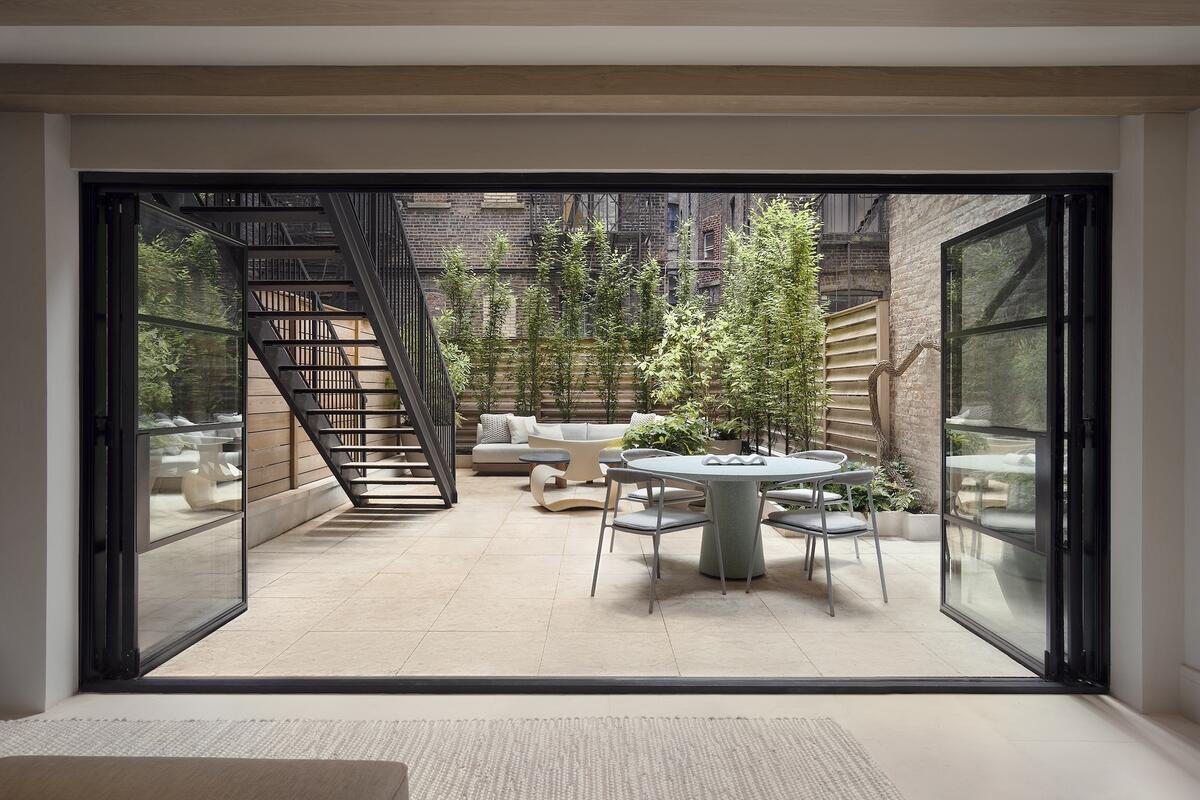
When you look at the firm you’ve built now, what is the one thing you know now that you wish you had known at the beginning?
I wish I had a very beautiful answer to that, but I think that the process has been the beauty. Sometimes I remember the way I was when I was younger and I feel embarrassed, but mostly I feel proud of where I’ve gotten and excited about what’s coming. I wouldn’t have any of that without trying, failing and trying again. People always tell you, “It gets easier.” But it doesn’t really get easier—you just get better. It actually gets much more complicated, but you get used to it, and you get better at finding solutions. It’s a nice thing to look forward to—the part about getting better—you know?
What does success look like for you?
I only care about being happy. If I’m happy, then that’s success. If I can finish my day and feel proud of what I did—if I feel like I’ve been kind to people around me, I’m loved, and people are thankful that I’m around—then that’s success.
Has that always been the way you’ve approached success for your firm?
No, not at all. It shifted once I made a decision to really dive deep into what I wanted. I used to be like, “I want to be in Architectural Digest,” but that doesn’t matter as much to me anymore. If AD and all of the other magazines happen, then that’s a bonus, but I can’t wait for somebody else to make me feel successful.
To learn more about Susana Simonpietri and Chango, visit her website or find her on Instagram.





























